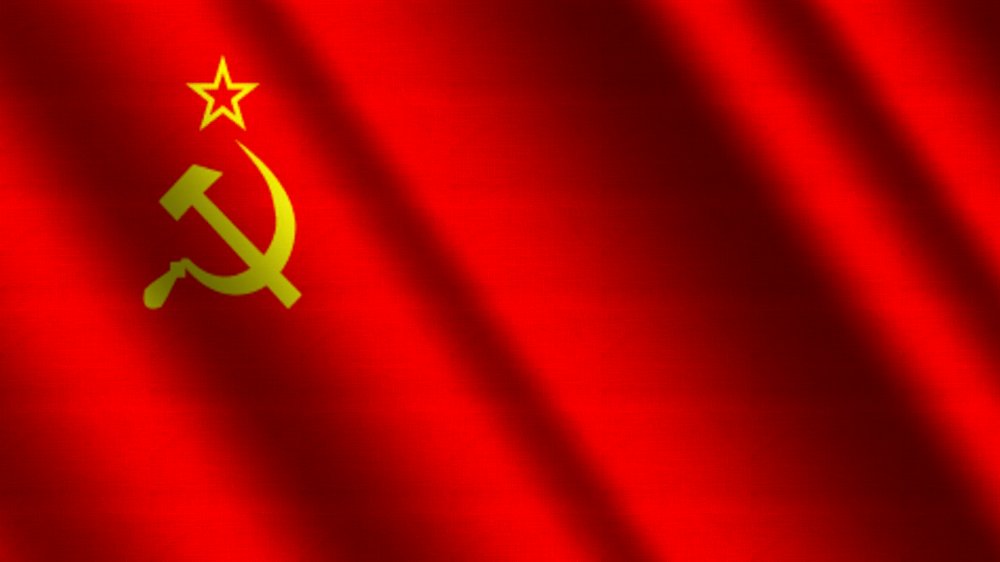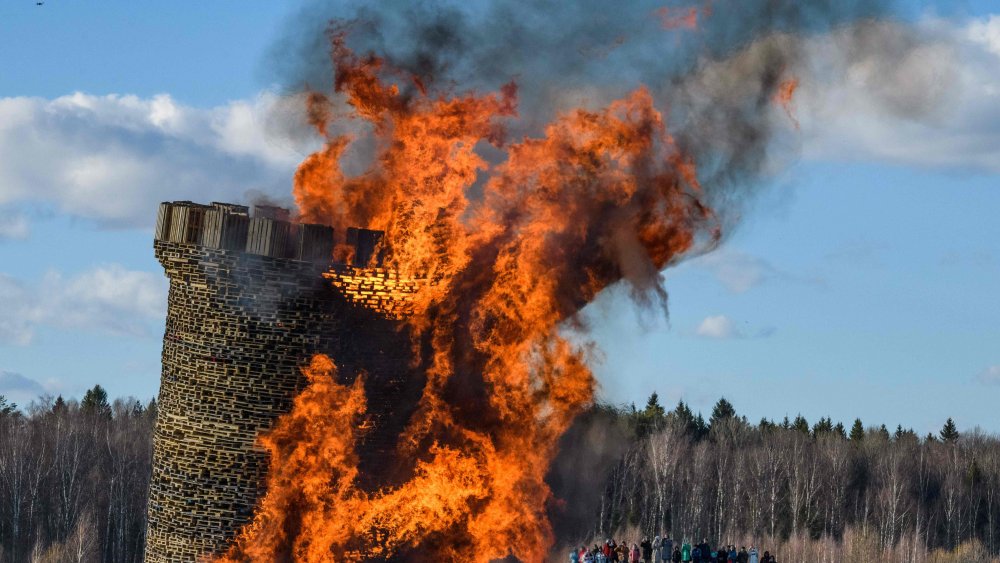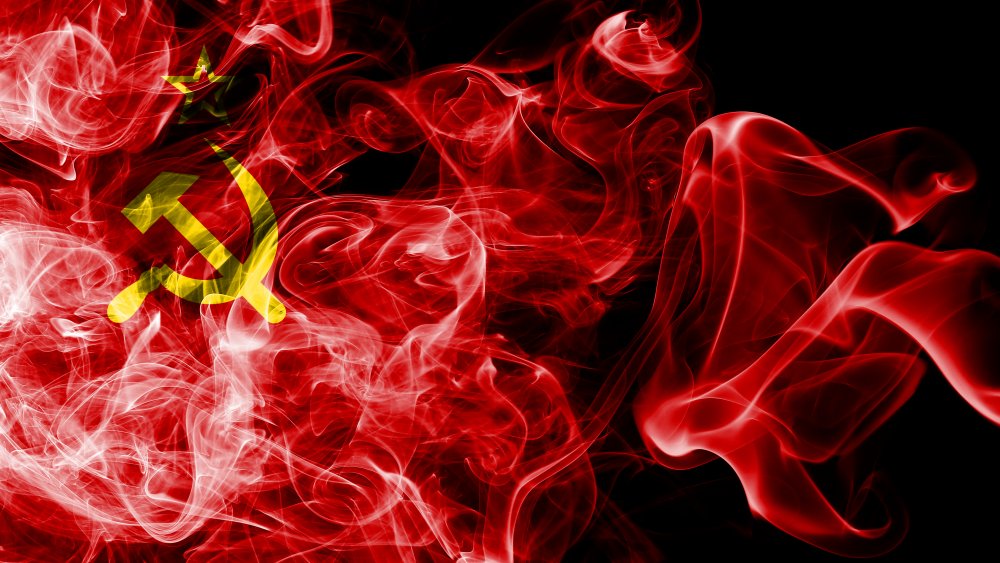The Real Meaning Of The Soviet Russian Flag
If memes have taught us anything about Soviet Russia, it's that the flag flies you. That's because it flies in the face of individual freedoms. The crimson banner bears a hammer and sickle with a star and has become synonymous with the oppression behind the Iron Curtain and the iron fist of Joseph Stalin (whose last name fittingly means "man of steel" in Russian). But as history will remind us, a symbol isn't as simple as its most salient associations, and once upon a time, the notorious hammer and sickle stood for something greater.
Red, white, and sacre bleu
The Soviet flag is partly rooted in the French Revolution. Per Britannica, French revolutionaries used a plain red flag to represent the rights of the masses and opposition to autocratic rule. Both sentiments were echoed in the Russian Revolution, and according to author Paul Spicker, the French Revolution's pursuits of liberty, quality, and fraternity "heavily influenced" Marxism. Red flags took on an explicitly socialist meaning in 1871 when the Paris Commune adopted the Red Banner as an emblem of socialist movements throughout Europe. Per the Independent, in 1889, Irish activist Jim Connell penned "The Red Flag," a song which explicitly couches the crimson banner in terms of socialist solidarity. It mentions the French, Germans, and Russians who embrace the banner, which flies in the face of "the rich man's frown."
The rise of the Soviet flag
The Soviet Union bloomed like a bloody rose after the 1917 Russian Revolution toppled the Romanov dynasty, per History. The Bolshevik-led Red Army brandished the Red Banner and would spill plenty of red during a civil war with the White Army, which was comprised by capitalists, monarchists, and people who advocated alternative forms of socialism. After a string of executions known as the Red Terror, the Bolsheviks prevailed and instituted the Soviet Union in 1921.
The Soviet flag design was outlined in the subsequent constitution and unfurled in 1924, according to Britannica. The hammer and sickle were symbolic nods to workers and peasants while the star signaled "the ultimate goal of global communist victory." But rather than fighting the good fight for the downtrodden, the Soviet Union became the oppressive boot on the neck of the people, deviating from socialism and descending into a flaming red hell of totalitarianism.


